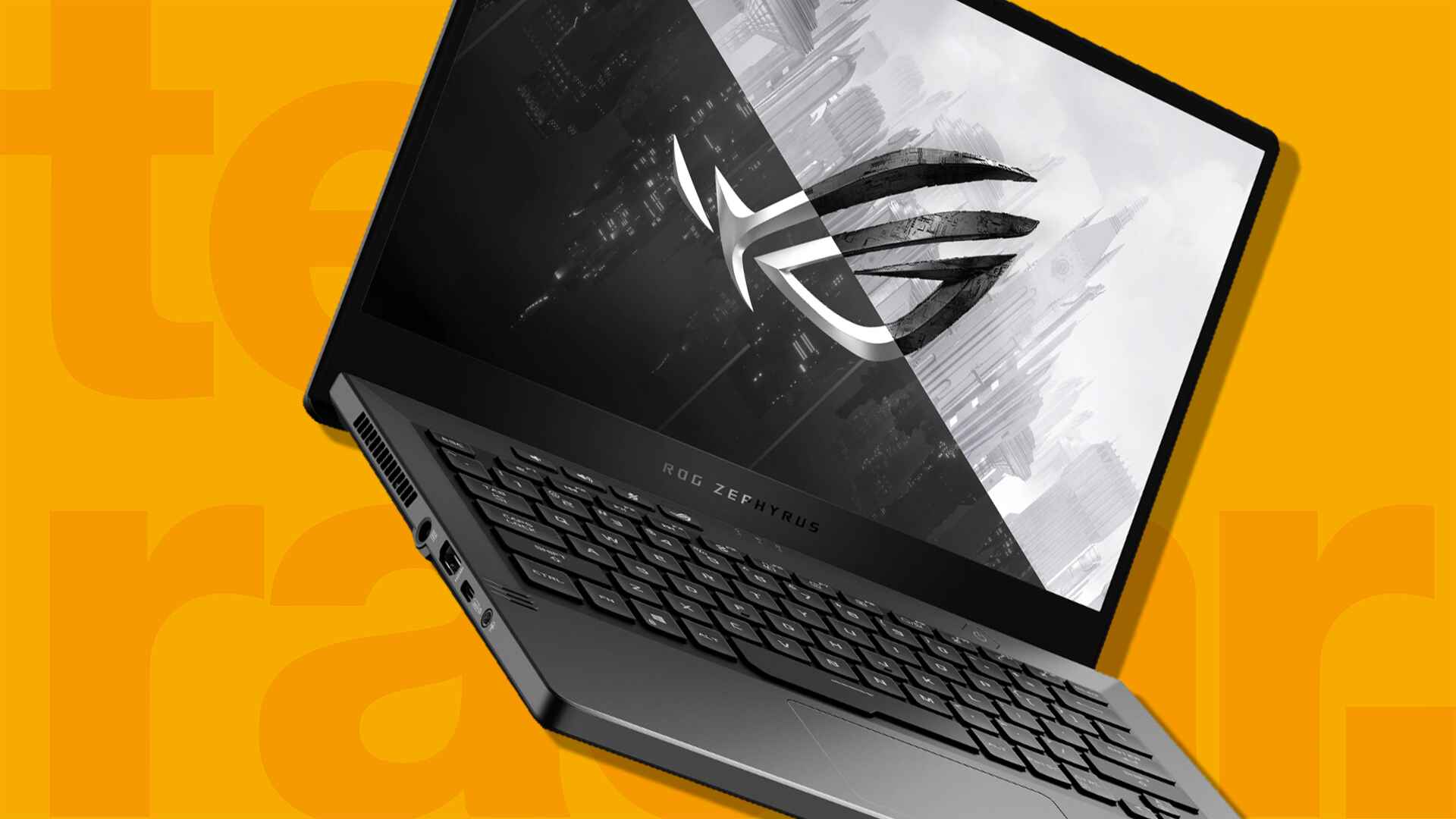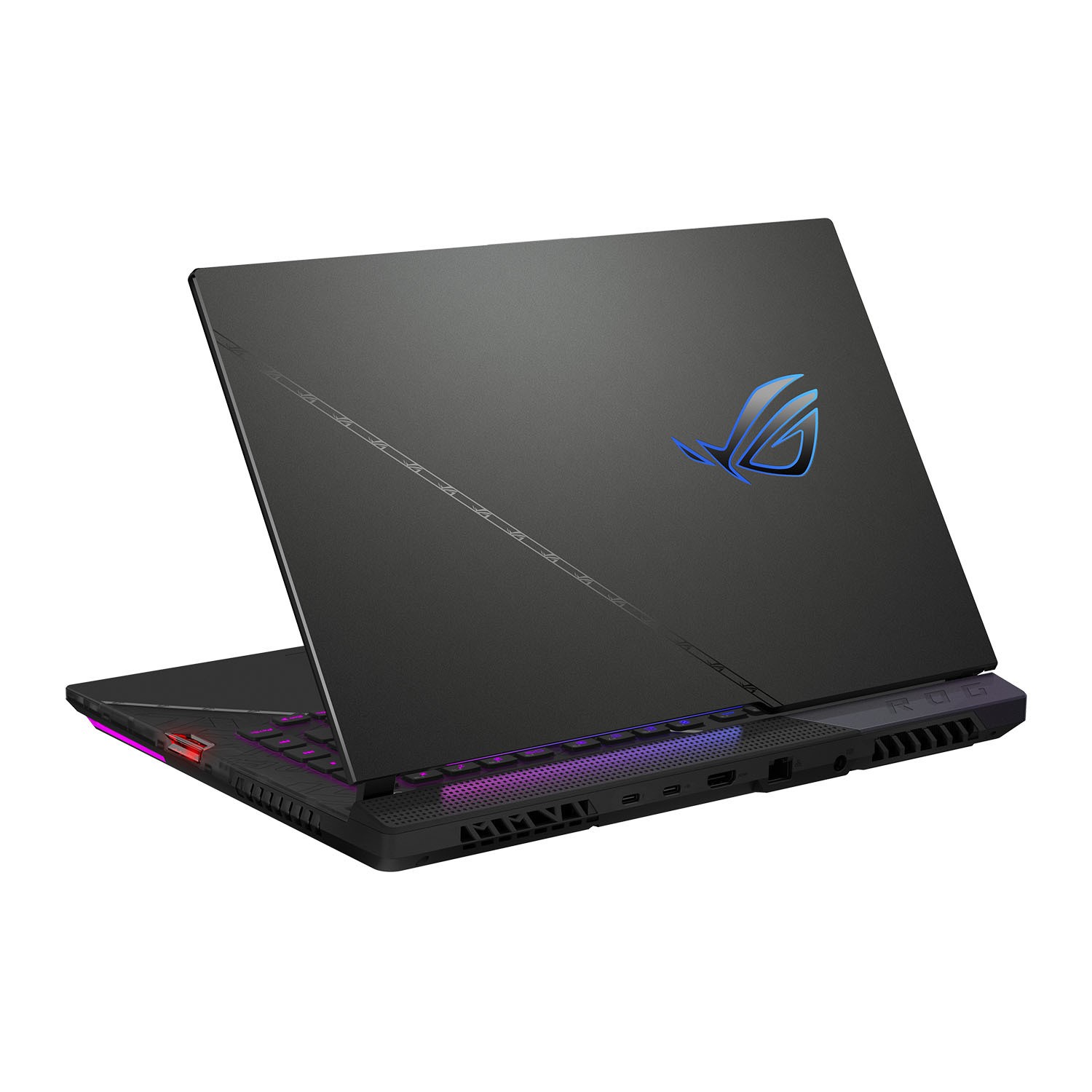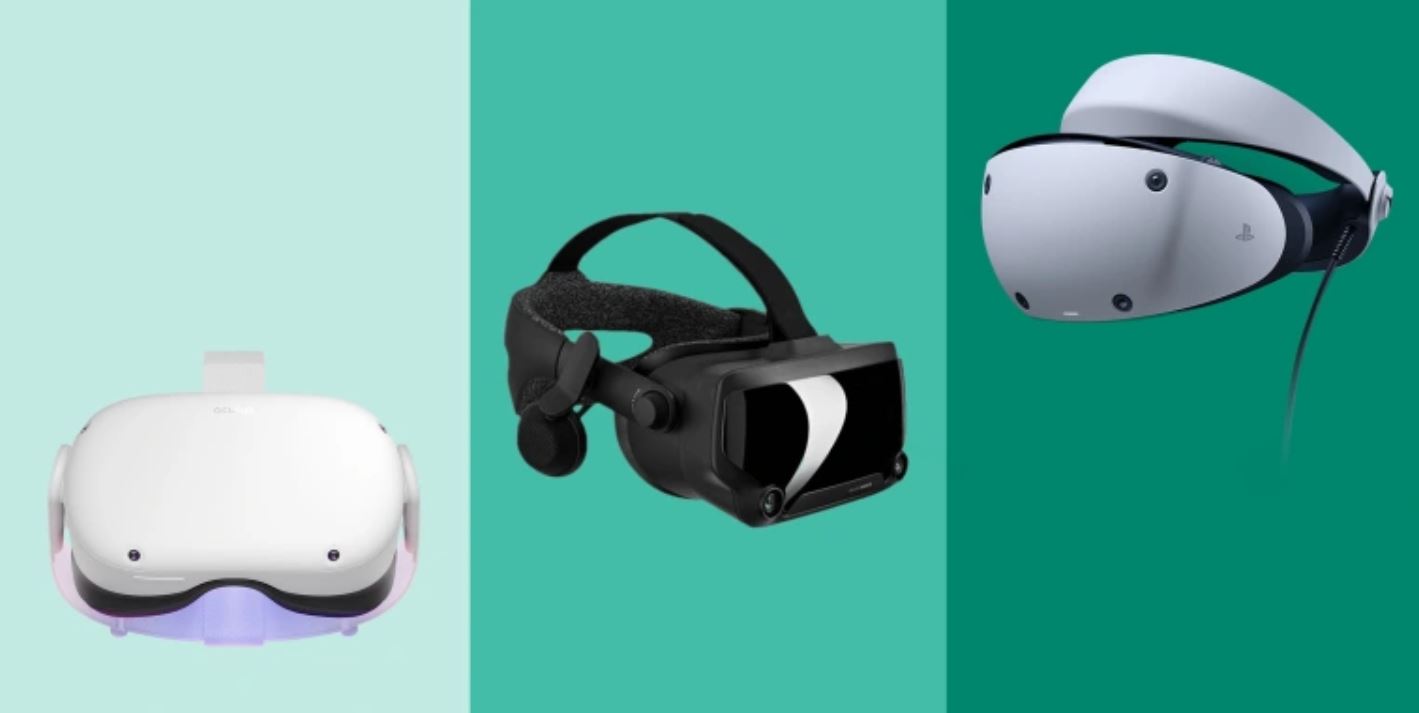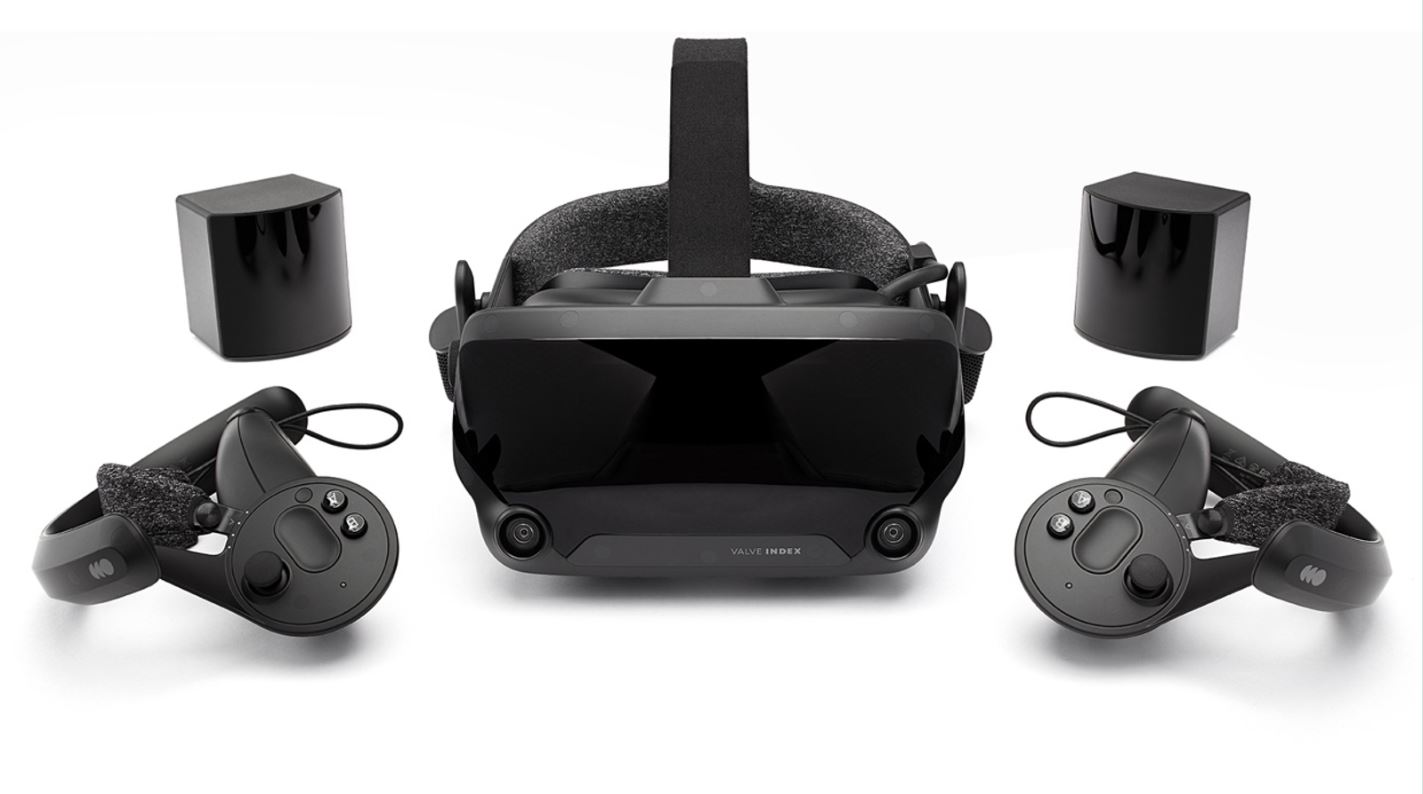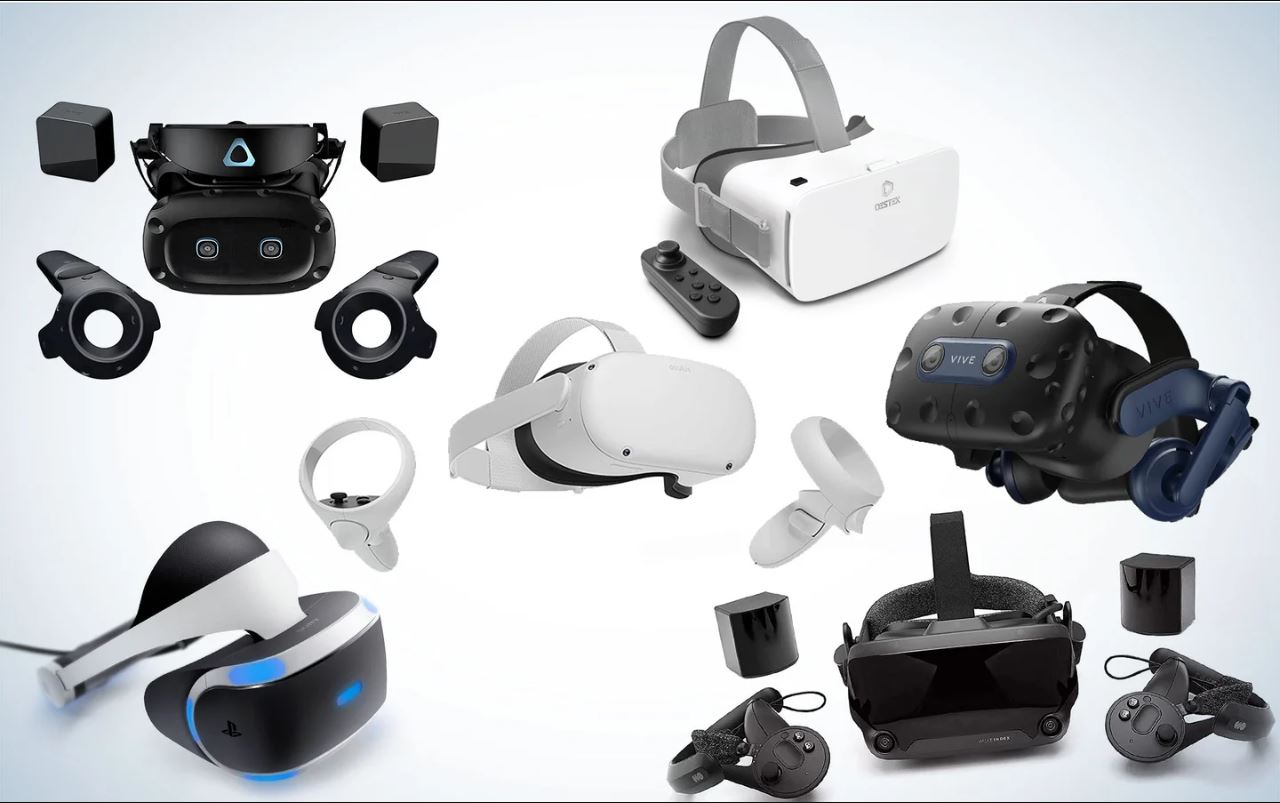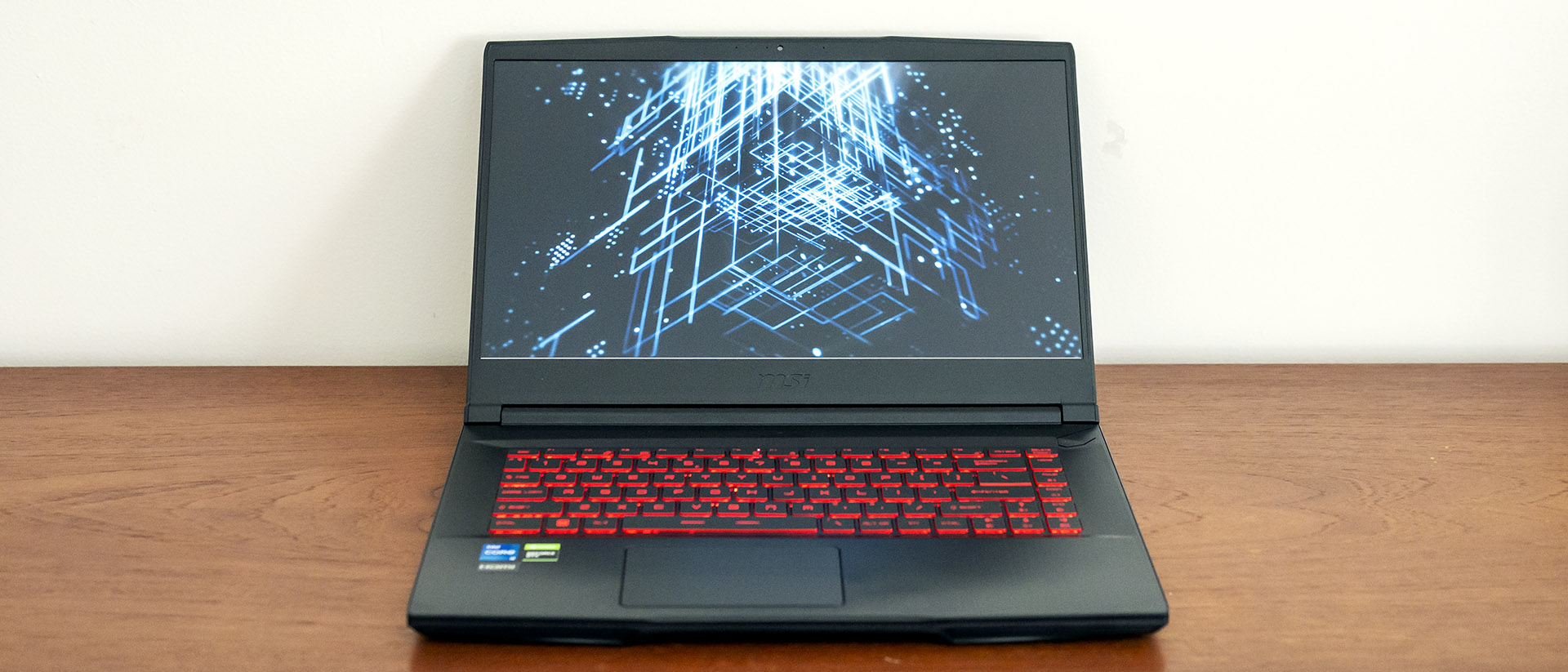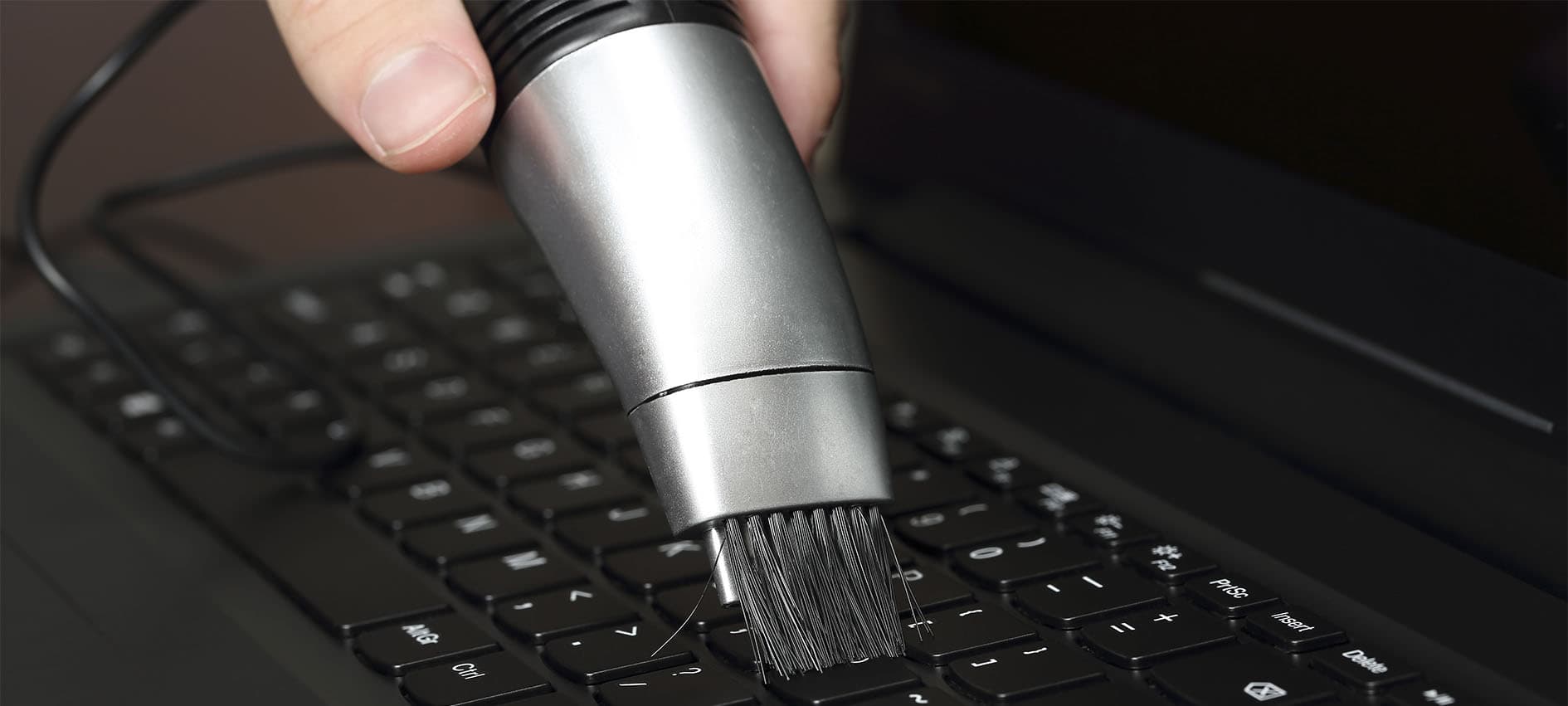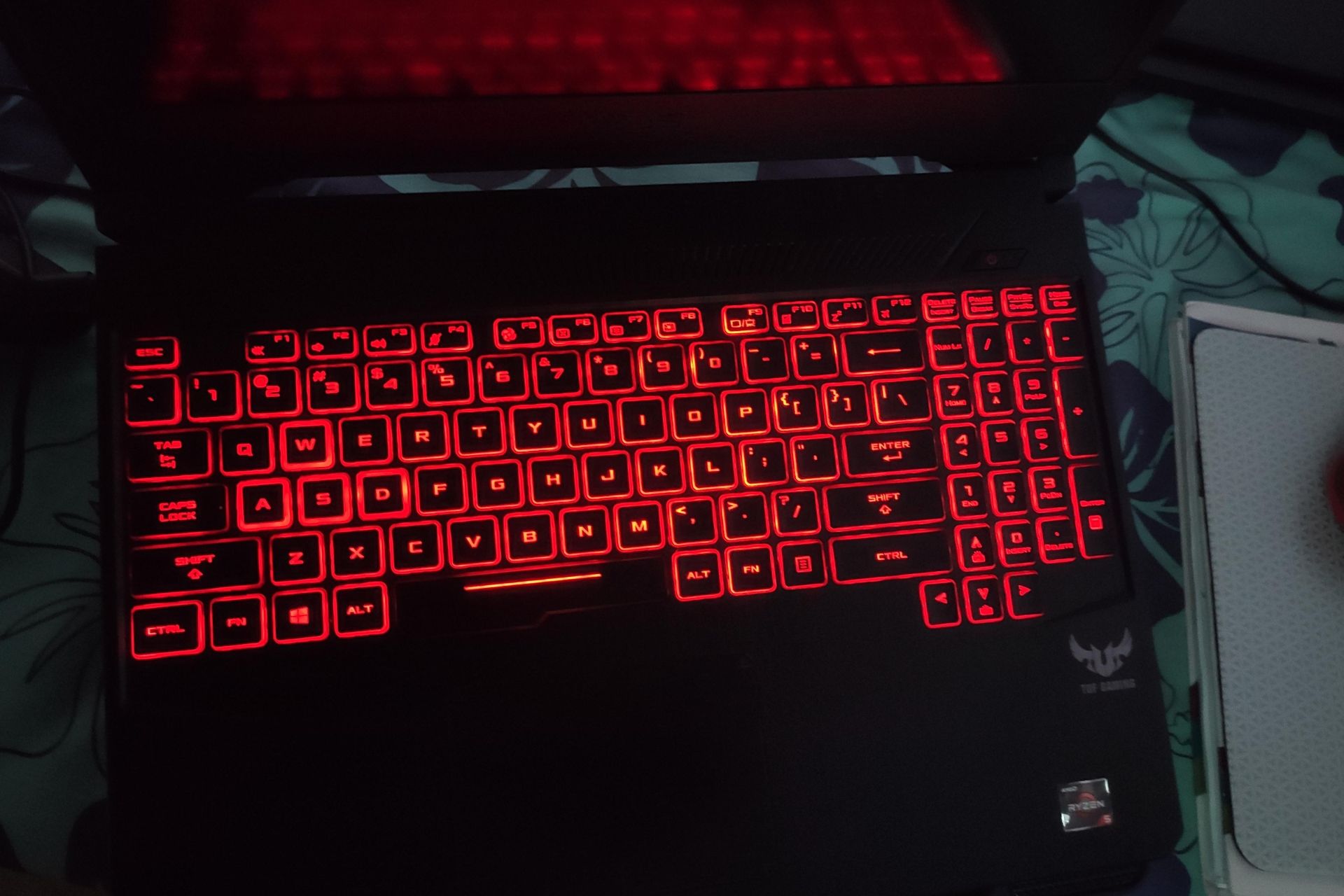Introduction
Welcome to the world of gaming, where the thrill of immersive graphics and action-packed gameplay awaits you! But what if you’re stuck with a laptop that doesn’t quite meet the requirements for your favorite gaming titles? Don’t worry, because you’re in the right place. In this article, we’ll show you how to turn your crappy laptop into a gaming powerhouse.
While a dedicated gaming laptop might be the ideal solution, not everyone has the budget for it. Luckily, there are several steps you can take to upgrade your current laptop and enhance its gaming capabilities. By making some strategic changes and optimizations, you can transform your underperforming laptop into a gaming beast.
Before we dive into the specific upgrades and modifications, it’s essential to assess your current laptop’s specifications. You’ll need to understand its limitations and identify the areas that require improvement.
In the following sections, we’ll guide you through the step-by-step process of upgrading various components in your laptop, such as the processor, RAM, and graphics card. We’ll also explore the benefits of installing a solid-state drive (SSD) and optimizing your operating system for gaming performance. Additionally, we’ll discuss overclocking your laptop, cooling strategies, and installing gamer software and drivers.
It’s important to note that while these upgrades can significantly improve your gaming experience, they won’t turn your laptop into a high-end gaming rig. However, they will undoubtedly boost its performance and allow you to enjoy a wider variety of games without breaking the bank.
So, if you’re ready to unleash the gaming potential of your laptop, let’s get started with assessing your current device and determining the necessary upgrades to transform it into a gaming laptop!
Assessing Your Current Laptop
Before you begin upgrading your laptop for gaming, it’s crucial to assess its current specifications. This step will help you determine which components need to be upgraded and understand the limitations of your device.
Start by checking the processor speed and model. Gaming requires a processor with sufficient power to handle the demanding tasks of rendering graphics and processing game code. If your laptop’s processor falls short, you may need to consider upgrading.
Next, evaluate the amount of RAM (Random Access Memory) in your laptop. RAM plays a critical role in gaming as it directly impacts the performance and speed of the system. Ideally, you should aim for a minimum of 8GB or more to ensure smooth gameplay. If your laptop currently has less, upgrading the RAM is highly recommended.
Another essential component to assess is the graphics card. Gaming relies heavily on graphics processing, so having a dedicated graphics card is crucial. Check the model and performance capabilities of your existing graphics card. If it’s integrated or outdated, you might need to invest in a more powerful graphics card for an optimal gaming experience.
In addition, take a look at the storage capacity and type of drive in your laptop. Traditional hard disk drives (HDDs) can significantly slow down loading times in games. Consider upgrading to a Solid State Drive (SSD) for faster data access and improved gaming performance.
Lastly, pay attention to the cooling system of your laptop. Gaming tends to generate a lot of heat, and if your laptop doesn’t have effective cooling mechanisms, it may overheat and throttle performance. Ensure that the cooling fans are working correctly and consider investing in a laptop cooling pad if necessary.
By thoroughly assessing your current laptop’s processor, RAM, graphics card, storage, and cooling system, you’ll gain a clearer understanding of its gaming potential and the areas that require improvement. Armed with this knowledge, you can proceed to the next sections to learn how to upgrade each of these components and optimize your laptop for an exceptional gaming experience.
Upgrading Your Processor
If your laptop’s processor is outdated or doesn’t meet the requirements of modern gaming, upgrading it can significantly improve performance. However, it’s worth noting that not all laptops allow for processor upgrades, as many come with soldered or non-removable processors.
Start by researching your laptop model to determine if it supports processor upgrades. Check the manufacturer’s website or consult the laptop’s documentation for compatibility information. If an upgrade is possible, follow these steps:
- Identify the socket type: Each processor has a specific socket type that corresponds to the motherboard’s socket. Ensure that the new processor you choose has a compatible socket type.
- Research compatible processors: Look for processors that are compatible with your laptop’s socket type and offer a significant performance boost. Consider factors such as core count, clock speed, and cache size.
- Purchase the new processor: Once you’ve identified the processor you want to upgrade to, purchase it from a reputable supplier. Ensure that it’s brand new and comes with a warranty.
- Prepare for the upgrade: Before performing the upgrade, back up your data and create a system restore point. It’s also recommended to have an anti-static wristband and a small screwdriver kit for the installation process.
- Remove the old processor: Carefully open your laptop and locate the processor. Gently release the socket lever, then lift the old processor out of the socket. Handle it by the edges and avoid touching the pins or connectors.
- Install the new processor: Align the new processor with the socket, ensuring that the notches on the processor match the socket. Gently place it into the socket and lower the socket lever to secure it in place.
- Reassemble your laptop: Put the laptop back together, making sure that all connections are secure. Reattach the battery and power up your laptop.
- Update drivers and BIOS: Once your laptop is running with the upgraded processor, visit the manufacturer’s website and download any necessary driver updates or BIOS firmware updates.
Upgrading your laptop’s processor can have a significant impact on gaming performance by enabling faster computations and smoother gameplay. However, if your laptop doesn’t allow for processor upgrades, consider other optimizations in the following sections to enhance gaming performance.
Increasing RAM Capacity
When it comes to gaming, having an adequate amount of RAM is crucial for smooth performance. Upgrading your laptop’s RAM can significantly enhance its ability to handle resource-intensive games and applications. Here’s how you can increase your laptop’s RAM capacity:
- Determine the maximum RAM capacity: Research your laptop model to find out the maximum amount of RAM it can support. Check the manufacturer’s website or consult the laptop’s documentation for this information.
- Identify the RAM type: Different laptops support different RAM types, such as DDR3, DDR4, or DDR5. Ensure that you choose a RAM module that is compatible with your laptop’s specifications.
- Purchase the new RAM modules: Once you know the maximum RAM capacity and the compatible RAM type, purchase the appropriate RAM modules from a reliable supplier. It’s recommended to get matching modules to take advantage of dual-channel memory technology.
- Prepare for the upgrade: Before installing the new RAM modules, make sure to shut down your laptop and unplug it from the power source. Additionally, ground yourself to discharge any static electricity by touching a metal object.
- Locate and access the RAM slots: Depending on the laptop model, the RAM slots may be accessible by removing a panel on the bottom or by removing the keyboard. Consult your laptop’s documentation or search for online guides specific to your model.
- Remove the old RAM modules: Carefully push the retention clips on the sides of the RAM modules to release them. Gently remove the modules by pulling them out at a 45-degree angle.
- Install the new RAM modules: Line up the notch on the RAM module with the corresponding notch in the RAM slot. Insert the module at a 45-degree angle and then press it down firmly until the retention clips snap into place.
- Test the newly installed RAM: Once the new RAM modules are installed, close any panels or put the keyboard back in place. Power on your laptop and check the system properties or use a system information tool to verify that the new RAM capacity is being recognized.
By increasing your laptop’s RAM capacity, you’ll provide it with more memory to handle complex gaming tasks. This will result in smoother gameplay, reduced lag, and improved overall performance. Keep in mind that while increasing RAM can enhance gaming, it may not solve all performance issues. Consider other optimizations in the following sections to ensure an optimal gaming experience.
Upgrading Your Graphics Card
One of the most crucial components for gaming performance is the graphics card, also known as the GPU (Graphics Processing Unit). If your laptop’s existing graphics card is outdated or underpowered, upgrading it can significantly improve your gaming experience. However, it’s important to note that not all laptops allow for graphics card upgrades, as many come with integrated or non-removable GPUs. Here’s how you can determine if your laptop’s graphics card can be upgraded:
- Research your laptop model: Start by researching your laptop to find out if it supports graphics card upgrades. Refer to the manufacturer’s website or consult the laptop’s documentation for compatibility information.
- Verify form factor and power requirements: If your laptop supports graphics card upgrades, ensure that it has a compatible form factor and power supply. Check the physical dimensions of the existing graphics card and make sure that the power supply can handle the new card’s power requirements.
- Identify compatible graphics cards: Look for graphics cards that are compatible with your laptop’s form factor, power supply, and operating system. Consider factors such as performance capabilities, memory size, and power efficiency.
- Purchase the new graphics card: Once you’ve identified a compatible graphics card, purchase it from a reputable supplier. Make sure that it’s brand new, comes with a warranty, and meets your gaming requirements.
- Prepare for the upgrade: Before installing the new graphics card, back up your data and create a system restore point. Gather any necessary tools, such as screwdrivers, thermal paste, and anti-static wristbands.
- Open up your laptop: Carefully open your laptop following the manufacturer’s instructions or by referring to online guides specific to your laptop model. Locate the existing graphics card, which is usually situated within a dedicated slot on the motherboard.
- Remove the old graphics card: Gently release any retention mechanisms or screws holding the graphics card in place. Carefully disconnect any power or data cables connected to the card and then lift it out of the slot.
- Install the new graphics card: Align the new graphics card with the slot, ensuring that it sits properly. Push it into the slot until it’s firmly seated, and then secure it in place using any necessary screws or retention mechanisms. Reconnect any power or data cables that were disconnected.
- Clean and rearrange components (if necessary): Depending on the new graphics card’s size or heat dissipation requirements, you might need to rearrange components or ensure proper airflow within the laptop. Clean any dust or debris from the cooling system, and then reassemble your laptop.
- Install graphics card drivers: Once your laptop is back together, install the latest graphics card drivers provided by the manufacturer. These drivers will optimize the card’s performance and compatibility with your operating system.
Upgrading your laptop’s graphics card can have a significant impact on gaming performance. A more powerful graphics card allows for higher frame rates, better visual quality, and smoother gameplay. However, if your laptop doesn’t support graphics card upgrades, consider other optimizations in the following sections to enhance your gaming experience.
Installing a Solid State Drive (SSD)
When it comes to gaming, fast and responsive storage is essential for quick loading times and smooth gameplay. Upgrading your laptop’s storage from a traditional hard disk drive (HDD) to a solid-state drive (SSD) can provide a significant boost in performance. Here’s how you can install an SSD in your laptop:
- Choose the right SSD: Determine the storage capacity you need and select an SSD that suits your requirements. Consider factors such as read/write speeds, durability, and price.
- Backup your data: Before proceeding with the installation, backup all your important files and data from your laptop’s current storage drive. This ensures that your data is safe and can be easily transferred to the new SSD.
- Gather the necessary tools: Depending on your laptop, you may need a screwdriver to remove the back panel or access the storage drive slot. Consult your laptop’s documentation or search for online guides specific to your model to ensure you have the right tools.
- Locate the storage drive slot: Open your laptop’s back panel or access the storage drive compartment. Identify the slot where the storage drive is installed.
- Remove the old storage drive (if necessary): If your laptop has an existing storage drive, disconnect the cables attached to it and remove it from the slot. Be careful not to force anything and ensure that you handle the drive gently.
- Install the SSD: Take the new SSD and carefully insert it into the slot, aligning the connectors properly. Apply gentle pressure to make sure it is securely in place.
- Connect the cables: If there were cables connected to the old storage drive, now is the time to reconnect them to the SSD. Make sure the connections are secure and properly fitted.
- Secure the SSD: If there are screws or retention mechanisms provided, use them to secure the SSD in place. Ensure that the SSD is firmly fixed within the slot.
- Replace the back panel: If you removed the laptop’s back panel to access the storage drive, carefully put it back in place and secure it with any screws or clips.
- Install the operating system and drivers: With the SSD successfully installed, it’s time to install the operating system on the new drive. This may involve using a bootable USB drive or recovery discs. Install any necessary drivers and software to optimize the SSD’s performance.
- Transfer your data: Once the installation is complete, transfer your backed-up data to the new SSD. This step ensures that all your files and applications are accessible on the upgraded storage drive.
By installing an SSD, you’ll experience significantly faster boot times, reduced game loading times, and overall improved system responsiveness. The transition from an HDD to an SSD is one of the most impactful upgrades you can make to enhance your laptop’s gaming performance.
Optimizing Your Operating System
Optimizing your laptop’s operating system is crucial for maximizing gaming performance. By fine-tuning various settings and removing unnecessary processes, you can ensure that your operating system is running efficiently. Here are some steps to optimize your operating system for gaming:
- Update your operating system: Keeping your operating system up to date is essential for system stability and security. Install the latest updates and patches provided by the operating system vendor to ensure that you have the most optimized version.
- Disable unnecessary startup programs: Many applications and services launch automatically when your laptop starts up, consuming valuable system resources. Review the list of startup programs and disable any that are unnecessary for gaming. This can be done through the “Task Manager” or “System Configuration” settings in your operating system.
- Adjust power settings: By adjusting your laptop’s power settings, you can optimize it for gaming performance. Set the power plan to “High Performance” to ensure that your system utilizes its maximum potential, although this may impact battery life.
- Optimize visual effects: Operating systems often come with visual effects and animations that can consume system resources. Adjusting these settings can free up resources for gaming. In Windows, you can access the “Performance Options” settings and choose the “Adjust for best performance” option or manually disable specific effects.
- Disable unnecessary services: Certain services running in the background can consume CPU and memory resources. Review the running services in your operating system and disable any that are not needed for gaming. However, exercise caution and ensure that you don’t disable critical system services.
- Clear disk space: Over time, your laptop’s storage can become cluttered with unnecessary files, which can impact performance. Use built-in disk cleanup utilities or third-party software to remove temporary files, system caches, and other unnecessary data.
- Run antivirus and malware scans: Viruses and malware can negatively impact performance and compromise system security. Regularly scan your laptop with a reputable antivirus and antimalware software to remove any potential threats.
- Manage background processes: Close any unnecessary applications and processes running in the background while gaming. These programs can consume CPU and memory resources, causing performance issues. Use the “Task Manager” or similar tools to identify and close resource-intensive processes.
- Defragment your hard drive (if applicable): If your laptop is equipped with a traditional hard disk drive (HDD), defragmenting it can improve overall performance. Use the built-in defragmentation tool in your operating system or third-party defragmentation software.
- Enable game mode (if available): Some operating systems have a “game mode” feature that optimizes system resources for gaming. Enable this mode to prioritize gaming processes and allocate resources accordingly.
By optimizing your operating system for gaming, you can ensure that your laptop runs at its best performance level. These steps will help you eliminate unnecessary processes, reduce system resource consumption, and provide a smooth gaming experience.
Overclocking Your Laptop
If you’re looking to squeeze out every bit of performance from your laptop, overclocking can be a viable option. Overclocking involves increasing the clock speed of your laptop’s components, such as the processor and graphics card, to achieve higher performance levels. However, it’s important to note that not all laptops support overclocking, and there are potential risks involved. Here’s a guide to overclocking your laptop if it’s compatible:
- Research the limitations: Before proceeding with overclocking, research the manufacturer’s limitations and guidelines for your specific laptop model. Some laptops may have locked BIOS options or limited overclocking capabilities.
- Ensure proper cooling: Overclocking generates more heat, so it’s crucial to have adequate cooling mechanisms in place. Use a laptop cooling pad or invest in a quality laptop cooler to prevent overheating during intense gaming sessions.
- Use overclocking software: Download and install overclocking software specifically designed for your laptop’s components. These tools provide user-friendly interfaces to adjust clock speeds, voltages, and other settings.
- Start with small increments: Gradually increase the clock speeds in small increments. Monitor the laptop’s temperature and stability after each adjustment. If you encounter instability or overheating, revert the changes and try smaller increments.
- Stress test your laptop: To ensure stability, stress test your laptop using software like Prime95 or AIDA64. These stress tests push your laptop to its limits and help identify any stability issues caused by overclocking.
- Monitor temperatures: Keep a close eye on your laptop’s temperatures during gaming or stress testing. Use monitoring software to track temperatures and ensure they remain within safe levels. If temperatures become too high, consider reducing the overclock or adjusting cooling methods.
- Adjust voltage settings (if necessary): In some cases, increasing clock speeds may require additional voltage to maintain stability. However, increasing voltage also increases heat output. If you need to adjust voltage, do so cautiously and monitor temperatures closely.
- Test and fine-tune: After making adjustments, test your laptop in real gaming scenarios. Pay attention to performance improvements and stability. Fine-tune the overclocking settings until you find the optimal balance between performance and stability.
- Proceed with caution and responsibility: It’s important to understand that overclocking may void warranty and can potentially damage your laptop if not done correctly. Proceed with caution, follow proper guidelines, and take responsibility for any risks involved.
Overclocking, when done correctly, can provide noticeable performance boosts, allowing your laptop to handle more demanding games and applications. However, always prioritize the safety and stability of your laptop, and be prepared to revert to default settings or seek professional assistance if necessary.
Cooling Your Laptop
Proper cooling is essential for maintaining optimal performance and extending the lifespan of your laptop, especially during intense gaming sessions. Overheating can lead to throttling, decreased performance, and potential hardware damage. Here are some effective ways to keep your laptop cool:
- Elevate your laptop: Use a laptop cooling pad or elevate the rear end of your laptop to improve airflow. This allows cool air to reach the bottom of the laptop and helps dissipate heat more effectively.
- Clean your laptop’s vents: Over time, dust and dirt can accumulate on your laptop’s vents, obstructing airflow and causing overheating. Regularly clean the vents using compressed air or a soft brush to remove any debris.
- Use a laptop cooling stand: Consider investing in a laptop cooling stand or pad with built-in cooling fans. These can help improve airflow and provide additional cooling to your laptop.
- Monitor and control fan speed: Use software utilities to monitor the fan speed of your laptop’s cooling system. Adjust the fan speed settings to ensure that they’re running at an optimal level for cooling, balancing airflow and noise levels.
- Avoid blocking airflow: Ensure that you don’t obstruct the laptop’s vents or fan intakes with your hands, pillows, or blankets. This restricts airflow and can lead to overheating. Use your laptop on a solid, flat surface to allow proper ventilation.
- Limit usage on soft surfaces: Using your laptop on soft surfaces like beds or sofas can hinder heat dissipation. These surfaces can block airflow and cause heat to build up. Whenever possible, use your laptop on a hard, flat surface.
- Manage ambient temperature: Avoid using your laptop in excessively hot environments, as this can aggravate cooling issues. Keep the room temperature at a moderate level to prevent additional heat stress on your laptop.
- Control power settings: Adjusting your laptop’s power settings can help regulate temperature. Opt for power-saving settings when not actively gaming to reduce the strain on the cooling system.
- Consider undervolting (for advanced users): Advanced users can explore undervolting as a means to reduce heat output. Undervolting adjusts the voltage supplied to the CPU, which can help lower temperatures. However, this process should be approached with caution and requires proper research and understanding.
- Regular maintenance: Perform routine maintenance tasks to ensure your laptop’s cooling system works optimally. This includes cleaning dust off internal components, applying fresh thermal paste, and checking for any signs of damage or wear.
By implementing these cooling strategies, you can help protect your laptop from overheating and maintain its performance during gaming sessions. Remember to regularly monitor temperatures and take immediate action if you notice any signs of excessive heat or cooling system issues.
Installing Gamer Software and Drivers
Installing gamer software and drivers is an essential step in optimizing your laptop for gaming performance. These specialized applications and drivers can enhance graphics, audio, and overall gaming experience. Here’s how you can install gamer software and drivers:
- Graphics drivers: Visit the website of your laptop’s graphics card manufacturer (e.g., NVIDIA or AMD) and download the latest drivers for your specific graphics card model. Install the drivers according to the provided instructions. These drivers ensure compatibility and can improve graphics performance in games.
- Audio drivers: Check your laptop’s manufacturer website or the website of your sound card’s manufacturer for the latest audio drivers. Download and install the appropriate drivers to ensure optimal audio performance while gaming.
- Gaming software: Install gaming software provided by the game developers or game platforms such as Steam or Epic Games Store. These platforms provide a central hub to manage and play your games. Download and install the necessary software to access and optimize your gaming library.
- Gaming peripherals software: If you have specific gaming peripherals such as a gaming mouse, keyboard, or headset, visit the manufacturer’s website and download any recommended software or drivers for those devices. These software packages often include customization options and additional features.
- Performance monitoring software: Install performance monitoring software to keep track of your laptop’s temperature, CPU usage, and GPU performance while gaming. Applications like MSI Afterburner or HWMonitor can provide real-time monitoring and help you identify any performance bottlenecks or overheating issues.
- Graphics optimization software: Consider installing graphics optimization software, such as NVIDIA GeForce Experience or AMD Radeon Software, which can automatically adjust in-game graphics settings based on your hardware capabilities. These applications can help you achieve the best balance between visuals and performance in your games.
- Controller software: If you use a gaming controller, ensure that you install the appropriate drivers and software provided by the controller’s manufacturer. This allows for proper functionality and customization options.
- Game patches and updates: Regularly check for patches and updates for your installed games. These updates often include bug fixes, performance optimizations, and additional content. Keeping your games up to date ensures you benefit from the latest enhancements and improvements.
- Firewall and antivirus exceptions: Adjust your firewall and antivirus settings to allow the necessary network access for gaming software. Sometimes, these applications can block online gaming features or prevent software updates. Adding exceptions or whitelisting the gaming software can resolve these issues.
- Configure and optimize game settings: Once you have installed the necessary software and drivers, launch your games and fine-tune their settings. Adjust graphics options, resolution, and other in-game settings to optimize performance and visuals based on your laptop’s capabilities.
By installing the appropriate gamer software and drivers, you can ensure that your laptop is equipped with the necessary tools to deliver an optimal gaming experience. Keeping these applications and drivers up to date enables you to take full advantage of your laptop’s hardware capabilities and stay on top of the latest gaming enhancements.
Conclusion
Congratulations! By following the steps and recommendations outlined in this article, you have learned how to turn your lackluster laptop into a capable gaming machine. Assessing your laptop’s specifications, upgrading the processor and RAM, and installing a solid-state drive (SSD) can significantly improve performance and loading times.
For enhanced graphics capabilities, upgrading your graphics card can take your gaming experience to the next level. Additionally, optimizing your operating system, overclocking (if supported), cooling your laptop, and installing gamer software and drivers can further enhance performance and deliver seamless gameplay.
Remember, each laptop has its limitations, and not all upgrades or optimizations may be possible or necessary. It’s essential to research your laptop model and consult the manufacturer’s guidelines to ensure compatibility and avoid voiding warranties.
Always prioritize proper cooling and monitor temperatures to prevent overheating. Regular maintenance, such as cleaning vents and removing dust, can help prolong the lifespan of your laptop and maintain optimal performance.
Lastly, keep in mind that while these upgrades and optimizations can enhance gaming performance, they won’t transform your laptop into a high-end gaming rig. However, with the right techniques and adjustments, you can enjoy a more enjoyable and immersive gaming experience without breaking the bank.
So, take a deep breath, gather your tools, and get ready to unleash the full potential of your laptop. Happy gaming!







